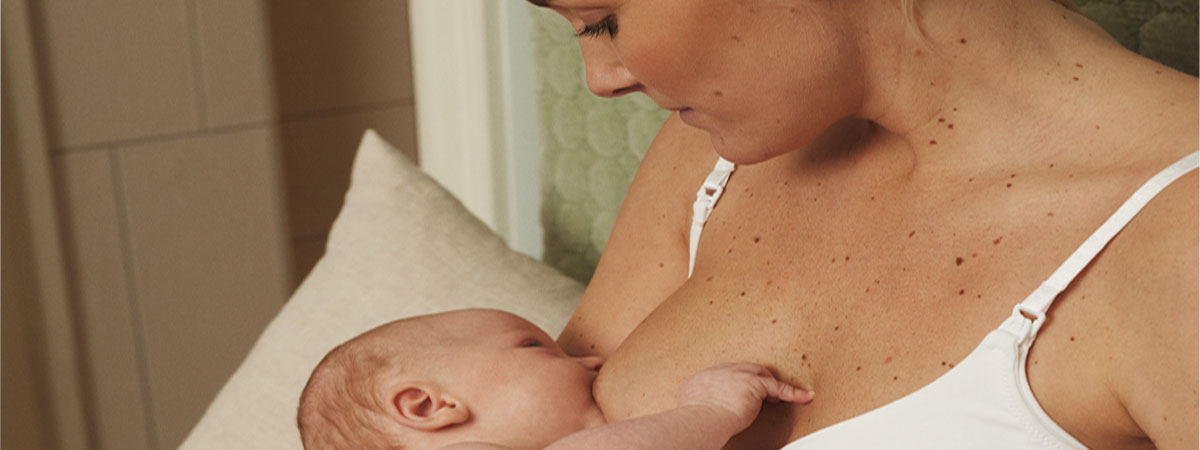
Blocked milk duct lumps
Lumps or knotty areas in the breast are not uncommon when breastfeeding, but if left untreated can progress to a painful condition in which the milk ducts became blocked or plugged; also known as 'caked breast'. Here are a few tips.
You probably know to expect having swollen breasts initially because of the increase in blood and liquid in the breast tissue. Blocked milk ducts are rare in the first few days after giving birth. But later on, it's not uncommon to experience some kind of difficulty breastfeeding.
Blocked milk ducts
Caked breast, or lumpy/ knotty areas in the breast, is caused by one or more milk ducts getting blocked. This can happen if the breast is constricted, for example, by an underwire bra, or if the breast is not completely drained when baby nurses.
If you have caked breast or lumps, your breast will be hot, sore, red and distended in the area where the milk duct is blocked. You may develop a fever and feel very poorly as if you had influenza.
If your breasts become sore
Seek medical advice immediately if your breasts start to feel sore, especially if you also have a fever. You can take medicine to reduce the fever. But whatever you do, don't stop breastfeeding, even if it is painful.
Try the following as soon as you feel any breast tenderness:
• Continue breastfeeding, ideally at very short intervals. Right now, breastfeeding is the best remedy. You may be forced to wake your baby for help in draining the sore breast.
• Offer baby the sore breast more than the other. It may be good to start feeds with that breast for a few days. If baby has difficulty latching on to the nipple, you can start by expressing a little milk by hand to ease the tension on the areola (coloured part around the nipple).
• Avoid wearing garments that constrict your breasts. Wear a nursing bra of the type that leaves no marks on the skin.
• Apply heat for relief. The pain can also be eased by gently showering the sore breast with warm water.
• Place a finger on the hard spot and stroke inwards to the nipple as baby suckles. But treat your breast with care. Read our article on sore (cracked, infected) nipples if you are having problems with this.
• Move baby during feeds so that baby's chin is pointing towards the distended area. This will help baby to drain the breast fully. Experiment with new nursing positions that help you achieve this such as lying down or holding your baby under one arm.
• Make sure you get enough sleep and plenty of quiet, rest and care and attention. Look at it this way: you are baby's food, and that food is out of sorts!
• Avoid drafts.
• If baby fails to drain the sore breast fully, you can express the milk by hand or using a breast pump until it softens again. However, take care to express just the right amount so that you don't step up your milk production.
• Don't get dehydrated; keep up your fluids.
Check for signs of improvement
Recovering from caked breast/blocked ducts takes patience. But you should start to feel an improvement within 12 hours, and when you do, you're on the mend. Your fever should soon disappear and your breast will be less red and sore.
Continue following the instructions above until you have made a full recovery. Again, this may take a few days.
If your breastfeeding difficulties don't resolve
If the blocked duct problem doesn't go away, if your nipples become infected or if you have had a fever for more than 12 hours, seek medical attention immediately. In some cases, there may be a bacterial infection that has to be treated with antibiotics. But whatever you do, don't stop breastfeeding.
If you have persistent problems breastfeeding, be sure to seek professional help and advice. Your paediatric nurse can help you with any breastfeeding problems in the first instance. Many women can also contact a local breastfeeding centre or call a maternity helpline.
